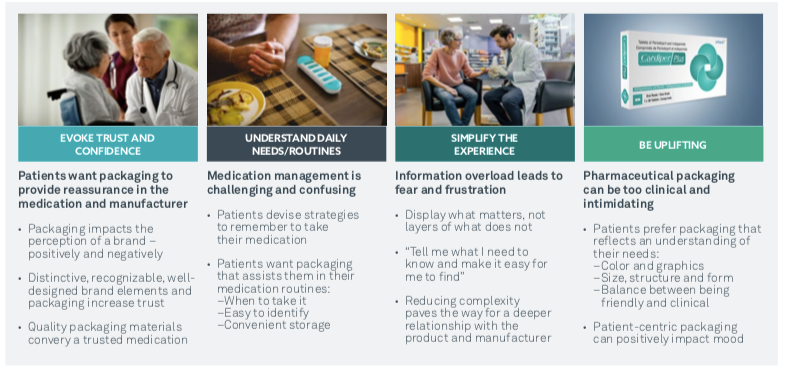Brand Design And The Pillars Of Patient-Centricity
The healthcare industry is undergoing real transformation with respect to how it communicates with key audiences who are now fully connected, better informed and within reach of a myriad of choices never before thought possible.
This inflection point is occurring industry-wide (pharma, biopharma, devices, health services, and therapies). Established pharma/healthcare companies have realized that by focusing on crafting and curating experiences that are patient-centric, it is possible to build longer term, less transactional and more enduring relationships with their audiences.
Why is this important?
No one in the healthcare industry will deny the value of patient-centricity, even as it remains somewhat ill-defined to many. Patient-centricity is not just about patients, however. In fact, there are real and derivative benefits to many audiences beyond the patient.
For example, brands that can achieve patient-centricity within the chain of care provide a benefit to physicians who prescribe these products, services and therapies with the hope of improving adherence and compliance, and ultimately fostering better outcomes.
Similarly, when caregivers, nurses and HCPs administer products, services and therapies that are designed with patient-first thinking, we see improvements in patients’ day-to-day routines, which can lower stress and create the condition for more optimal medication management.
Finally, we are seeing the optimization and re-imagination of the pharmacy experience around the world as the confluence of design, technology and innovation has created new delivery platforms. These platforms have redefined what patient-centricity means within established channels of distribution that were once thought largely immutable.
Why is it relevant to brand design?
At its heart, brand-building is about storytelling. We use design to create ownable and relevant “stories” that are a reflection of a company, product, service or other entity. Importantly, brand design needs to highlight all that a brand stands for, and then accurately reflect that across verbal, visual and experiential elements.
For brands dedicated to the advancement of medical science in order to improve patients’ lives, patient-centricity is not only fundamental to their charter, it can serve as a guidepost for how brands are commercialized within the chain of care. Thus, the “story” of patient-centricity is relevant and ownable by any brand dedicated to this mission. As a result, the key question becomes ‘how should a brand capture its authentic flavor of patient-centricity across its unique ecosystem of care?’
With large segments of the Health & Wellness marketplace engaged in the pursuit of patient-centricity, the onus today is on the brand design community to make “patient-first” design tangible, practical and bespoke to the ambitions and strategic realities of every brand and client.
To form our thinking around brand design and patient-centricity, we have conducted in-depth research around the world with patients, physicians, caregivers and pharmacists. Through this research, we have created “The Pillars of Patient-Centricity”:
1) Evoke trust and confidence, 2) Understand daily needs & routines, 3) Simplify the experience, and, 4) Be uplifting. We use these pillars to design, measure and even validate key aspects of the brand journey.
With this in mind, the following illustrates how we go about applying these pillars to the all-important area of packaging, and how this can facilitate decision-making at situational, emotional and functional crossroads:

By designing patient-centric experiences, today’s brands can achieve greater levels of differentiation, while building much deeper and more bespoke experiences with key audiences, even beyond the patient. All of this reverberates positively in the form of increased brand equity, greater operational performance and better outcomes within the chain of care.





